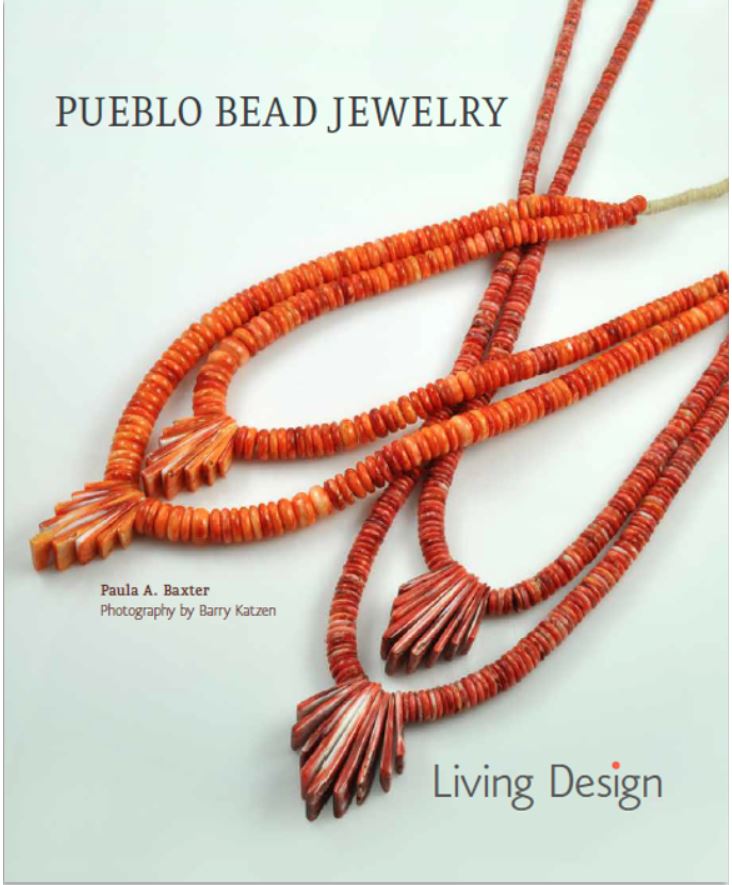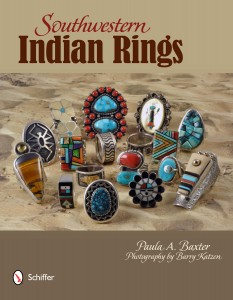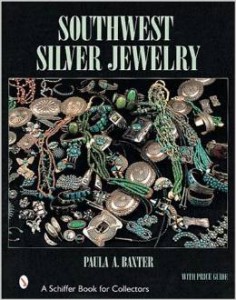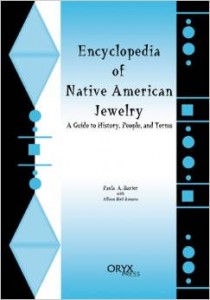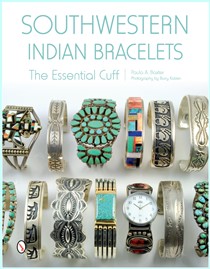Cabochons are stones cut into a convex form and highly polished rather than faceted. A finished cabochon has a rounded top and a flat bottom. Native lapidarists and jewelers frequently use the cabochon process because it works well with turquoise, coral, and other semiprecious stones.
Fact: Cabochons are better known as simply “cabs.”
The loss of American Indian Art Magazine was hard for its many fans and subscribers. The publisher, Mary Hamilton, had done a sterling job in maintaining 40 years of quality, by recruiting the best research efforts of scholars and experts in the field. Print magazines in all categories have diminished greatly over the past decade. AIAM also provided a very scholarly evaluation of gallery and museum events, legal developments, new publications, and advertising from the crème de la crème of Native arts dealers.
Fact: In a most pleasing way, new resources revealed themselves at the recent Heard Museum Guild Fair and Indian Market.
IFAM is also extending its intertribal membership to a geographically different locale than the Southwest. Working with NIAA (Northeast Indigenous Arts Alliance) and the Mashantucket Pequot Museum, IFAM(E) is the name of a two-day event to be held at the museum on May 20-22. On the evening of the 20th, they are hosting a “Glow Party.” Lacking information, it appears to be a sort of happening. On the weekend (the 21st and 22nd), they are holding an art market from 10 a.m. to 6 p.m. each day.
Fact: The best way to learn more, including a list of the 90 artists currently signed on, is to check indigefam.org for forthcoming information.
IFAM, the Indigenous Fine Art Movement, has turned heads in recent years by splintering off from the giant SWAIA operation and establishing an Indian arts market that overlaps annual with the SWAIA annual Indian Market in Santa Fe. Reviews have been mixed about this development, but the hundreds of artists who are part of this new group represent serious talent and drive. Many people wonder if such a group will harm the annual Indian Market over time. It’s early days for that yet, but IFAM has shone a new and very different light on Native artistic thinking. This is the core idea that the work all Native peoples produce now is most definitely fine art in all senses of the term. Writers like myself have been waiting for Native artists to begin claiming labels they alone have devised.
Fact: Native artists have already brought forward one new term for their contemporary explorations and that is “Native Style.”
Fact or Fiction? Some people have been muttering about the ethnic American Indian market being at a crossroads. Dealers are complaining about one-time purchasers — customers who buy during a visit, but then plan to go on to other travels and interests. Some collectors complain about young people being too interested in electronics to develop a passion for Native arts. Does this mean that the Native art market is in peril? The truth may lie somewhere between fact and fiction; times inevitably do change, tastes can be altered, but too much “same old, same old” will provoke change for sure. I am beginning to worry that the Native market is not in flux as much as it should be. Economic uncertainty can breed caution, but any artists, no matter their ethnicity, who just don’t move forward with creative design will see their following drop…
I want to divert for a moment and ask instead, Fact or Fiction? I am preparing to go to Phoenix for the upcoming Heard Museum Guild Fair and Indian Market on March 5. This year the Fair is hosting many Native children at their relatives’ booths. This is often delightful, being able to spot real talent early on! But I am becoming concerned about young artists who haven’t paid their dues, as we would say, charging much higher prices than warranted. True, materials costs are high, but pricing art work too high when you’re young can discourage prospective buyers and supporters.
Old Buttons are valued in the antique Indian jewelry marketplace. They were originally fasteners on Native dress made from a wide range of materials, including bone, shell, and wood. The introduction of silver permitted many variations in button shapes and ornamental effect. The button styles of the early 20th century have been adapted for use in other jewelry forms such as earrings.
Fact: Jewelers took the early pre-1900 hemisphere and made corrugated, filed or grooved surface decoration.
When a Buffalo is depicted on Indian jewelry, most people rightfully think of their connection with Plains tribes. Yet, the sturdy humpbacked animals convey strong qualities that appeal to other Native artists as well. The overworked metaphor that compares buffalo herds to the situation of Native Americans has been proven trite and shopworn. Today, the buffalo possesses an honor that ironically springs from that same source. When this beast appears on jewelry, it will be shown either in full profile or the head alone is depicted. Over time, the buffalo has been charged with a nobility and dignity that is not unlike Native ceremonials and dances.
Fact: In the last twenty years, the buffalo motif remains strong in both realistic and abstract renderings on hide and silver and stone.
Have you ever considered the Butterfly Spacer ornament? This form is usually part of a silver concha belt; it’s made in a butterfly-wedge shape and is intended to fill the interval between conch plaques.
Fact: The spacer first appeared around 1920, and probably originated from a blouse ornament.
A second problem lies in the fact that too many young artists are entering the market and charging prices that are too high. This is a trouble for all areas of fine art consumption. Even if their creations are striking, collectors and fans will become leery about buying. Yes, we are living in a modern, digitally active world, but the simple truth is that Native artists, like artists of all other ethnicities, have to pay their dues, and price modestly as they build their reputation for quality work.
Fact: If young people ask too high prices for their art too soon, they deprive buyers of the satisfaction that comes from supporting a young artist’s career rise. Or even worse, they turn off would-be buyers completely…
